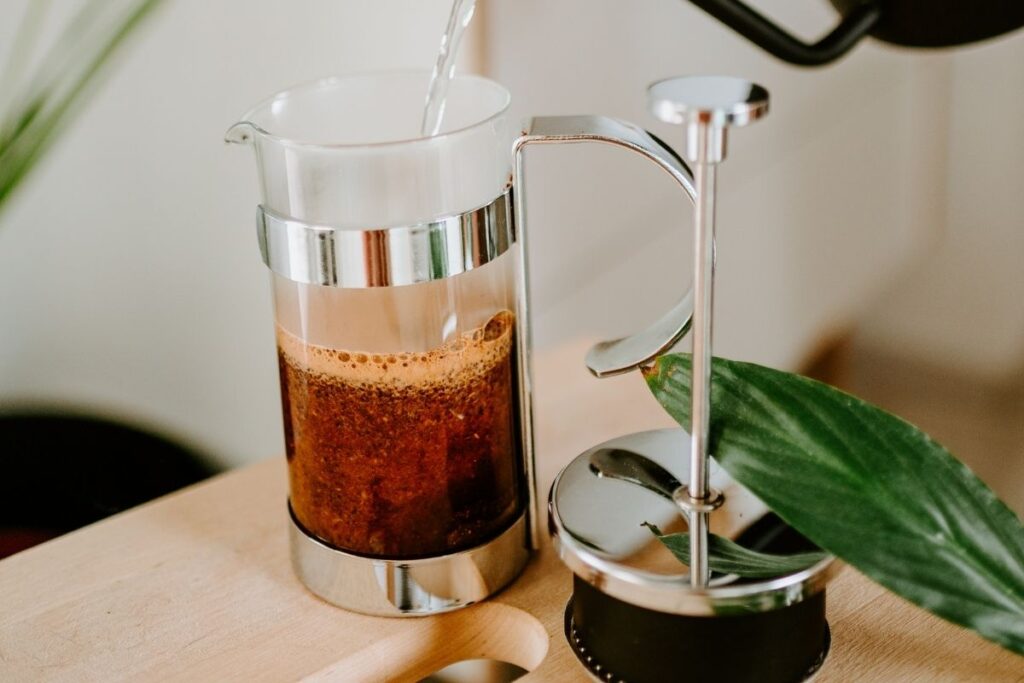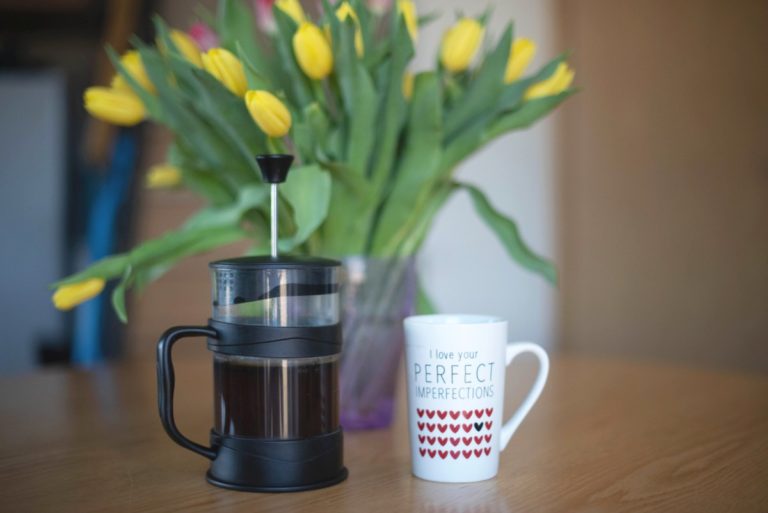As an avid coffee lover, you quickly come to the conclusion that no method is better than another; they are all different, unique in their own way.
In this article, we’ll explore some of the uniqueness, similarities, and differences of these three brewing methods: the French press, the Aeropress and the Chemex.
Affiliate disclosure
This page may contain affiliate links – we may earn a small commission when you make a purchase through these links. This is at no extra cost to you.
French press
Invented in the 19th century, nobody can say for certainty where it originated: France, or Italy.
What’s sure is that an Italian man patented the idea at one point, and from there it evolved to what we know today as the French press of the Cafetiere.
It works by immersion, which is a type of brewing very few other brewing methods use. Immersion means letting the grounds sit in the water for some time, then discarding the grounds.
By the way, have you had a look at our deals page yet?
French press brew
The French press uses a metal filter, to which it owes a lot of its flavor.
Metal filters, unlike paper or cloth, do not filter out coffee oils, substances that are responsible for flavor and aroma.
As a result, French press coffee feels fuller, more aromatic, and more flavorful than other coffees.
However, it suffers from immersion itself which is a subpar type of brewing coffee – it has since fallen out of favor and the French press is to this day the only brewing method that makes use of it – except for cold brew coffee.
The problem with immersion is that since the hot water is in prolonged contact with the grounds, this leads to the extraction of undesirable flavors and, most notably, bitterness.
This is why cold brew uses immersion too but in a more effective way: no hot water, no risk of over extraction.

Aeropress
The Aeropress in, in comparison, a new brewing method. It was born in the early 2000s, when inventor Alan Adler turned his attention to coffee.
He wanted a chea, easy way to make espresso at home – he was tired of having to get his coffee somewhere they wouldn’t get it right.
So he came up with the Aeropress.
Like espresso, it uses force to pass the water through the grounds. However, the force is provided by the barista, instead of complex pistons.
Simple, cheap, and most importantly: delicious.
Aeropress brew
Aeropress coffee is a tricky one. It combines immersion with percolation (running water through the grounds) to create a very unique type of coffee.
In addition, it uses a paper filter, which adds a layer of flavor (or takes it away, depending on who you ask).
Like other brewing methods that utilize a paper filter, the Aeropress brew can be described as clean, meaning that it feels acidic in a desirable way, but also that it has no overpowering flavors, and as such the flavor profile is clean, balanced.
Because of the immersion, it does feel stronger and more flavorful than methods that use a paper filter, like the Chemex.
Ultimately, Aeropress coffee is nowhere near an espresso substitute, because the pressure can’t equal that which is created by an espresso machine.
And yet, it is a concentrated coffee, full of flavor and completely unique.

Chemex
The Chemex has quite an interesting origin story. If it looks like it belongs inside a chemistry lab it was because, well, it was invented by a scientist. Dr. Peter Schlumbohm was an avid coffee lover much like yourself, a scientist and an inventor – and he set out to create the simplest, most efficient coffee brewer.
His invention was celebrated around the world, and the Chemex gained renown not only because of the excellent coffee that it brews, but also because it is a beautiful feat of design.
In fact, the Chemex was exhibited by the New York Museum of Modern Art.
How many coffee coffee brewers can boast of such an accomplishment?
Chemex brew
Chemex uses paper filters – but not just any type of paper filter. The paper filters they use are thicker, offering strong filtration. As a result, the brew produced is light, but has an incredibly refined flavor.
It has a remarkably pleasant acidity and a sweetness to it.
Bitterness is greatly reduced thanks to this filtration and thus your are left with an admittedly weak, but flavorful coffee full of pleasant flavors and almost completely devoid of negative ones.

Photos by TeaCoffee99, PhotoMIX Company and Purple Smith





